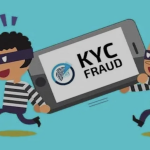
Stuck in Limbo: Why Can’t I Withdraw My Funds? A Deep Dive into Common Crypto Scams
The world of cryptocurrency offers the promise of high returns and financial independence. However, it is also fraught with risks, one of the most frustrating being withdrawal problems. Investors may find themselves stuck in limbo, unable to access their funds. This article explores common crypto scams that result in withdrawal issues, how to report withdrawal problems, and steps to recover from crypto scams.
Understanding Withdrawal Problems in Crypto
Withdrawal issues in cryptocurrency can stem from a variety of causes, some benign and some fraudulent. It is crucial to distinguish between technical issues, regulatory compliance checks, and outright scams.
Technical Issues
Legitimate crypto exchanges sometimes experience technical difficulties. These can include system maintenance, network congestion, or software bugs. While frustrating, these issues are typically resolved within a reasonable timeframe.
Regulatory Compliance
Reputable exchanges adhere to strict regulatory requirements. These may include anti-money laundering (AML) and know your customer (KYC) procedures. Sometimes, withdrawals are delayed as the exchange verifies user identities or transactions. Although inconvenient, these checks are essential for maintaining the integrity of the financial system.
Scams and Fraud
Unfortunately, some withdrawal problems are the result of scams. Fraudulent exchanges and investment platforms often lure investors with promises of high returns, only to block withdrawals once the money is deposited. Recognizing these scams early can save investors significant financial losses.
Common Crypto Scams Leading to Withdrawal Problems
- Ponzi Schemes
Ponzi schemes promise high returns with little or no risk. Early investors may receive some returns, paid out from the deposits of newer investors. However, the scheme collapses when new deposits dwindle, leaving many investors unable to withdraw their funds.
- Phishing Scams
In phishing scams, fraudsters create fake websites or emails that mimic legitimate crypto exchanges. Investors are tricked into entering their credentials, allowing scammers to access their accounts and drain their funds. When investors try to withdraw, they find their accounts emptied.
- Exit Scams
In an exit scam, a seemingly legitimate crypto exchange or investment platform suddenly disappears, taking all deposited funds with it. Investors find themselves unable to withdraw their money, as the platform has vanished without a trace.
- Fake Wallets and Apps
Fraudsters create fake wallets or mobile apps that appear legitimate. Investors deposit their crypto into these wallets, only to find that they cannot withdraw their funds. The fraudsters have designed the wallet to steal the deposited cryptocurrency.
- Pump and Dump Schemes
In pump and dump schemes, scammers artificially inflate the price of a cryptocurrency through false or misleading information. Once the price is high, they sell off their holdings, causing the price to plummet. Investors who bought in at the inflated price are left with devalued assets and may face withdrawal issues as the platform struggles with liquidity.
Reporting Withdrawal Problems
If you encounter withdrawal problems, it is crucial to report them immediately. Here are steps you can take:
- Contact the Exchange
Start by contacting the exchange or platform’s customer support. Provide all necessary details and documentation to help resolve the issue. Sometimes, withdrawal problems are due to technical or compliance issues that can be resolved through proper channels.
- File a Complaint with Regulatory Authorities
Report the issue to relevant financial regulatory authorities. In the United States, you can file a complaint with the Securities and Exchange Commission (SEC) or the Commodity Futures Trading Commission (CFTC). In the European Union, report to the European Securities and Markets Authority (ESMA). Providing detailed information helps authorities investigate and take action against fraudulent platforms.
- Report to Law Enforcement
If you believe you are a victim of fraud, report the incident to your local law enforcement agency. They can investigate the scam and potentially recover your funds.
- Use Online Reporting Platforms
Several online platforms allow users to report scams and fraudulent activities. Websites like the Federal Trade Commission (FTC) and the Internet Crime Complaint Center (IC3) provide resources for reporting and tracking crypto scams.
Steps to Recover from Crypto Scams
Recovering from a crypto scam can be challenging, but there are steps you can take to improve your chances of getting your funds back.
- Gather Evidence
Collect all relevant documentation, including transaction records, emails, and screenshots. This evidence will be crucial for any legal or recovery processes.
- Contact Your Bank or Payment Provider
If you used a credit card or bank transfer to fund your crypto account, contact your bank or payment provider immediately. Explain the situation and request a chargeback or transaction reversal.
- Seek Legal Advice
Consult with a lawyer who specializes in financial fraud and cryptocurrency. They can provide guidance on legal actions you can take against the fraudulent platform.
- Engage Recovery Services
Some companies specialize in recovering funds from crypto scams. They can provide all the necessary help needed to recover your loss. Sinereclaim is a good example of a reputable recovery firm.
- Join Support Groups
Online forums and support groups for scam victims can offer valuable advice and emotional support. Sharing your experience can help others avoid similar scams and may provide insights into recovery strategies.
Preventing Future Scams
To protect yourself from future crypto scams, consider the following precautions:
- Conduct Thorough Research
Before investing in any platform, conduct extensive research. Look for reviews, regulatory information, and independent verification of the platform’s legitimacy.
- Verify Regulatory Compliance
Ensure that the platform is registered and compliant with relevant financial regulatory bodies. In the U.S., you can check with the SEC or FINRA.
- Be Skeptical of High Returns
Be wary of any platform promising guaranteed high returns with minimal risk. Investments always carry risk, and high returns are often accompanied by high risk.
- Use Reputable Exchanges and Wallets
Stick to well-known and reputable exchanges and wallets. Avoid platforms with little to no track record or those that operate anonymously.
- Enable Security Measures
Enable two-factor authentication (2FA) and other security measures on your accounts. This adds an extra layer of protection against unauthorized access.
Conclusion
Withdrawal problems in the crypto world can be a sign of technical issues, regulatory checks, or more sinister scams. By understanding common crypto scams, knowing how to report withdrawal problems, and taking steps to recover from crypto scams, investors can protect themselves and their funds. Staying vigilant, conducting thorough research, and prioritizing security are essential in navigating the volatile and often risky world of cryptocurrency. Remember, due diligence and caution are your best defenses against the ever-evolving landscape of crypto scams.






